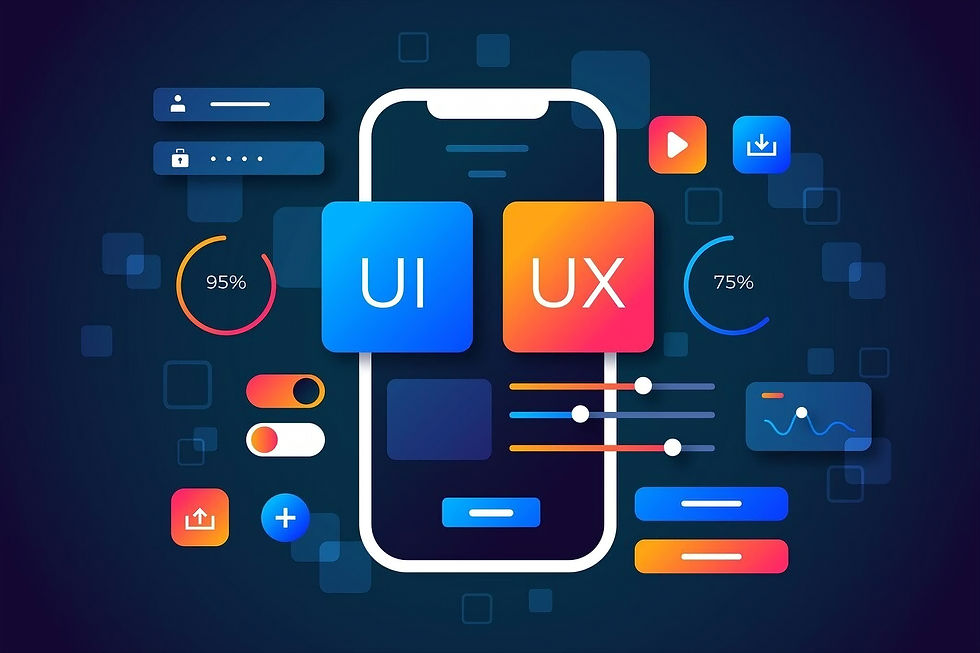Demystifying UI/UX Design: Understanding the Differences and Importance
- Epifania

- May 18, 2024
- 2 min read
In the contemporary digital sphere, the roles of user interface (UI) and user experience (UX) design are pivotal in shaping the efficacy of products and services. Although often conflated, UI and UX represent distinct facets of the design journey, each with its principles and objectives.

Understanding UI Design
UI design revolves around the visual components of a digital interface, encompassing elements like buttons, icons, color palettes, and typography. Its core aim is to fashion an intuitive and visually appealing layout that amplifies usability and captivates users. UI designers strive to forge interfaces that not only please the eye but also streamline functionality and navigation.
A fitting analogy to grasp UI design is likening it to crafting a car's dashboard. Just as a well-constructed dashboard presents crucial information in a clear and intuitive manner to the driver, UI design ensures digital interfaces offer a seamless and visually harmonious experience to users.
Unpacking UX Design
Conversely, UX design entails the entire user journey, spanning from initial interaction with a product or service to the ultimate outcome. It delves into understanding user behaviors, requirements, and motivations to sculpt meaningful and delightful experiences. UX designers are entrusted with optimizing every facet of the user journey to heighten satisfaction and realize business objectives.
Expanding on the car analogy, UX design mirrors the comprehensive design and functionality of a car, encompassing factors like comfort, performance, and reliability. It entails tasks such as user research, persona creation, wireframing, prototyping, and usability testing to iteratively refine the user experience.
Key Contrasts Between UI and UX Design
Focus: UI design centers on the aesthetics and appearance of a digital interface, while UX design addresses the overall user experience, encompassing usability, accessibility, and contentment.
Tools and Techniques: UI designers typically employ graphic design software such as Adobe XD or Sketch, while UX designers utilize an array of tools for tasks like user research, wireframing, prototyping, and usability assessment.
Objectives: UI design aims to craft visually appealing and user-friendly interfaces that facilitate interaction, whereas UX design seeks to optimize the entire user journey and bolster user satisfaction.
Skill Sets: UI designers possess expertise in graphic design, typography, and visual communication, while UX designers boast proficiency in user research, information architecture, interaction design, and usability principles.
Collaboration: UI and UX designers collaborate closely, with UI design integrating UX principles to engender a cohesive and immersive interface.
In essence, UI and UX design are complementary disciplines harmonizing to engender exceptional digital experiences. While UI design addresses the aesthetics and visual elements, UX design navigates the broader realm of user interactions and contentment.
By discerning the disparities between UI and UX design and embracing their distinct roles in the design journey, enterprises can effectively harness design principles to deliver products and services resonating with users, thus fostering success in the competitive digital arena.



Comments